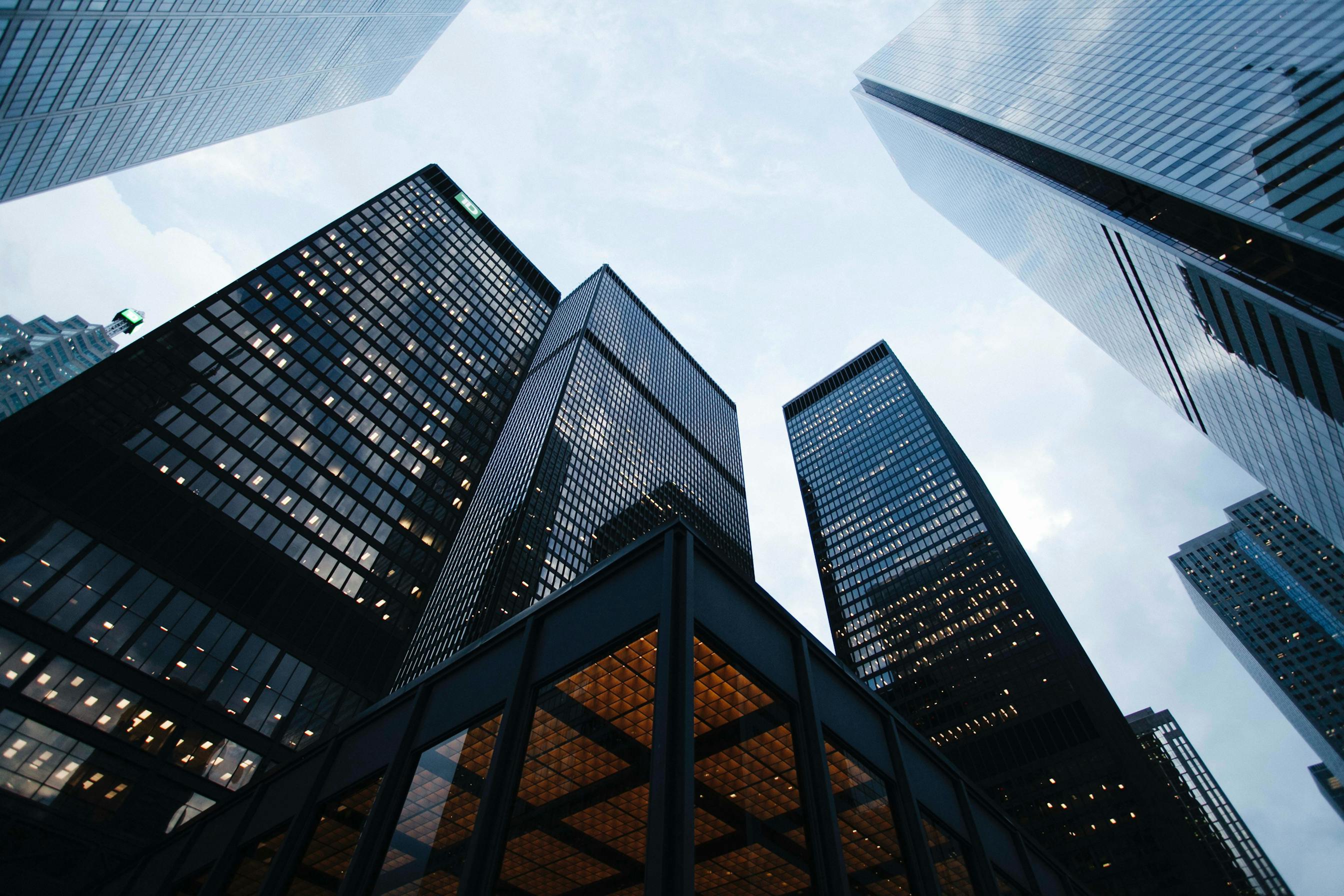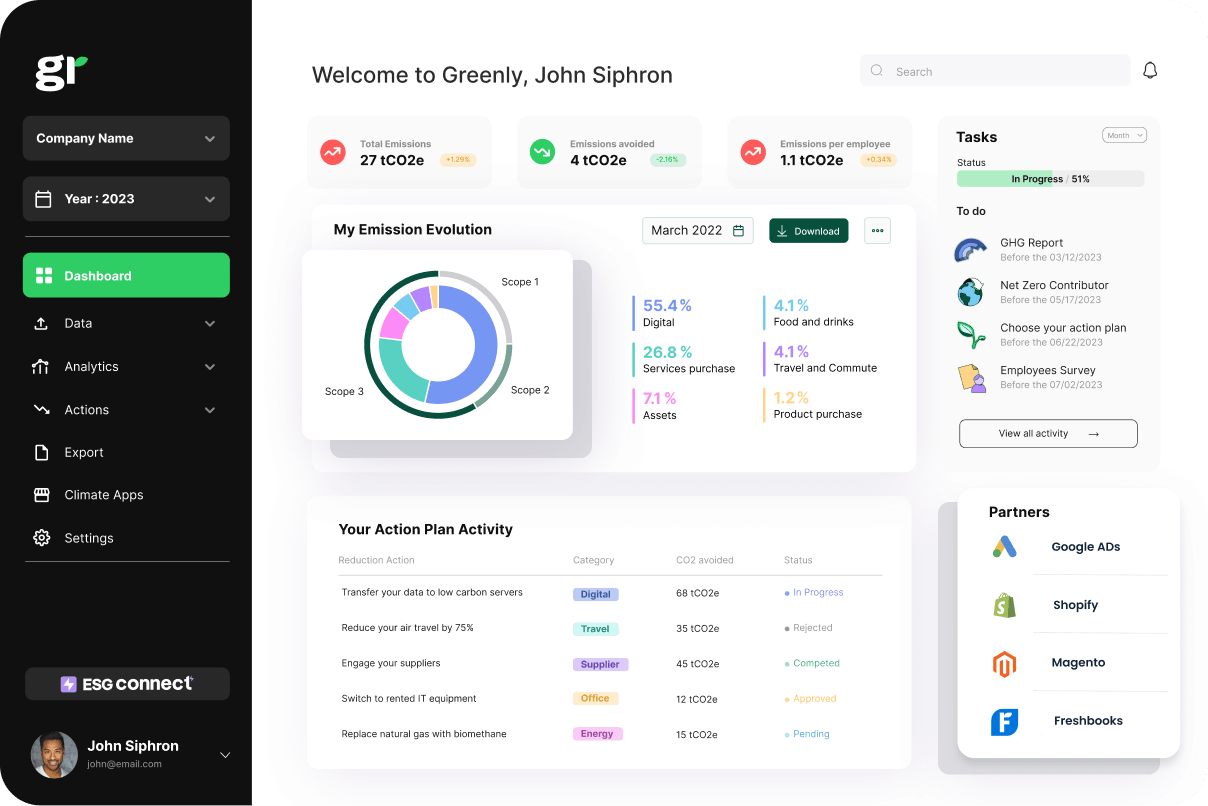ESG / CSR
Industries
What is Energy Use Intensity (EUI)?



When it comes to understanding energy efficiency in buildings, Energy Use Intensity (EUI) stands out as one of the most practical and revealing metrics. At its core, EUI helps quantify how much energy a building consumes relative to its size, offering a clear snapshot of its overall performance. But it’s more than just a number, it’s a tool that helps guide critical decisions around energy management, cost reduction, and sustainability.
As businesses and policymakers grapple with rising energy demands and mounting climate pressures, the importance of tools like EUI continues to grow. By shedding light on where and how energy is used, EUI empowers building owners to take meaningful steps toward improving efficiency and lowering their carbon footprint.
👉 In this article, we’ll explore the ins and outs of Energy Use Intensity, why it’s essential, and how it can help you unlock smarter, more sustainable building operations.
Defining Energy Use Intensity (EUI)
Energy Use Intensity (EUI) is a straightforward yet powerful metric that measures how efficiently a building uses energy. Specifically, EUI is calculated by dividing the total energy consumed by a building in one year by its total floor area. The result - typically expressed in kilowatt-hours per square meter (kWh/m²) or thousand British thermal units per square foot (kBtu/ft²) - provides a standardised way to compare energy performance across different building types and sizes.
How is EUI Calculated?
The formula for calculating EUI is:
EUI = Total Energy Consumed ÷ Total Gross Floor Area
For example, if an office building consumes 1,200,000 kWh of energy annually and has a total floor area of 10,000 square meters, the EUI would be calculated as:
1,200,000 kWh ÷ 10,000 m² = 120 kWh/m²/year
❗️ This calculation includes all energy sources powering the building, such as electricity, natural gas, and renewable energy. By standardising the comparison, EUI enables building managers to identify inefficiencies and benchmark performance against similar structures.
Types of EUI
There are two main types of EUI:
- Site EUI: Measures the energy consumed directly on-site, such as electricity or natural gas used for heating and cooling.
- Source EUI: Accounts for energy lost during production and transmission, providing a more comprehensive view of total energy impact.
Both metrics have their value, but source EUI offers deeper insights into the environmental footprint of energy use.
Why is EUI Important?
Energy Use Intensity (EUI) is a practical tool that aids with sustainability, cost management, and building performance. Understanding why EUI matters can help building owners, facility managers, and policymakers make more informed decisions about energy use and efficiency.
| Benefit | Description |
|---|---|
| Benchmark for Building Performance | EUI serves as a standardised way to compare the energy efficiency of buildings, regardless of their size or function. By analysing EUI, building managers can identify whether a facility is performing efficiently or consuming more energy than necessary. This benchmark is especially valuable for comparing similar building types, such as offices or schools, to uncover best practices and highlight inefficiencies. |
| Reducing Environmental Impact | Buildings are responsible for a significant portion of global energy consumption and greenhouse gas emissions. A lower EUI directly correlates with reduced energy use, which in turn helps to minimise carbon emissions. As governments and industries strive to meet net zero targets, EUI has become an essential metric for tracking progress and driving sustainability initiatives. |
| Lowering Operational Costs | Energy costs represent a substantial portion of a building’s operational expenses. By identifying opportunities to reduce EUI, building owners can lower their energy bills while simultaneously increasing the long-term value of the property. For businesses, these savings can be reinvested into other sustainability or operational goals. |
| Enhancing Regulatory Compliance | With stricter energy efficiency standards and building codes becoming the norm, EUI plays a critical role in meeting regulatory requirements. For instance, green building certifications like LEED (Leadership in Energy and Environmental Design) or BREEAM (Building Research Establishment Environmental Assessment Method) often use EUI as a key performance indicator. Tracking and improving EUI can help ensure compliance and improve a building’s environmental credentials. |
| Attracting Tenants and Investors | Sustainable buildings with low EUIs are increasingly attractive to tenants and investors who prioritise energy efficiency and reduced environmental impact. A building with a lower EUI signals better operational efficiency and a commitment to sustainability, making it more competitive in the market. |
How to Measure and Calculate EUI
Measuring Energy Use Intensity (EUI) is a straightforward process, but accuracy is essential to ensure meaningful insights. EUI calculations rely on a building’s total energy consumption and its gross floor area, providing a clear picture of how efficiently energy is used.
Steps to Calculate EUI
- Collect Energy Usage Data
Gather data on all energy sources used by the building over a one-year period. This includes electricity, natural gas, and any other energy inputs like district heating or renewable energy. Accurate metering and billing records are essential. - Standardise Units
Convert all energy consumption figures into a common unit, such as kilowatt-hours (kWh) or British thermal units (Btu). This step ensures consistency in your calculations. - Determine the Gross Floor Area
Measure the total floor area of the building in square feet (ft²) or square meters (m²). Gross floor area includes all enclosed spaces within the building. - Apply the EUI Formula
Use the formula to calculate EUI:
EUI = Total Energy Consumed ÷ Total Gross Floor Area
For example, if a school consumes 900,000 kWh annually and has a total floor area of 15,000 square meters, the EUI is:
900,000 kWh ÷ 15,000 m² = 60 kWh/m²/year - Analyse the Results
Compare your calculated EUI against benchmarks for similar building types. This helps determine whether the building’s energy performance is efficient or requires improvement.
Tools for Measuring EUI
Accurate EUI calculations often require tools and technologies designed for energy monitoring:
- Smart Meters: Track real-time energy consumption across different systems.
- Energy Management Software: Provides automated calculations, reporting, and benchmarking.
- Utility Bills: While less precise, utility data can be used for rough estimates.
Key Considerations
- Timeframe: Ensure the data represents a full year to account for seasonal variations in energy use.
- Energy Sources: Include all types of energy consumed, not just electricity.
- Building Use: Adjust for any periods where the building was vacant or partially operational.
By following these steps and leveraging the right tools, EUI can provide actionable insights into a building’s energy efficiency, helping managers pinpoint areas for improvement and track progress over time.
Factors Influencing EUI
While Energy Use Intensity (EUI) provides valuable insights into a building’s energy performance, a variety of factors can significantly influence the results. These factors must be considered to ensure fair comparisons and to identify meaningful opportunities for improvement.
1. Building Type and Function
Different building types naturally have varying energy demands. For example:
- Offices: Typically have moderate energy needs for lighting, HVAC (heating, ventilation, and air conditioning), and office equipment.
- Hospitals: Often have high EUIs due to energy-intensive medical equipment and 24/7 operation.
- Schools: Tend to have seasonal energy patterns based on academic calendars.
When comparing EUIs, it’s crucial to benchmark buildings within the same category to draw accurate conclusions.
2. Climate
The geographical location of a building plays a major role in its energy consumption:
- In colder climates, heating requirements drive up energy use during winter.
- In hotter regions, cooling systems like air conditioning contribute significantly to energy demand.
- Buildings in extreme climates will naturally have higher EUIs than those in temperate zones, even with energy-efficient systems in place.
3. Occupancy Levels and Usage Patterns
The number of people occupying a building and how they use it also affect energy intensity. For example:
- Buildings with higher occupancy often require more lighting, heating, cooling, and equipment use.
- Facilities with extended operational hours (e.g., 24-hour gyms or hospitals) will naturally consume more energy compared to those with standard hours.
4. Building Age and Design
Older buildings often have higher EUIs due to outdated construction techniques, poor insulation, and inefficient systems. In contrast, modern designs prioritise energy efficiency through features such as:
- Advanced insulation materials.
- Energy-efficient windows.
- Smart building technologies that optimise energy use.
Renovating older buildings to improve insulation or upgrade HVAC systems can significantly lower EUI.
5. Operational Efficiency
The way a building’s systems are maintained and operated can also influence EUI:
- Regular maintenance of HVAC systems ensures they run efficiently.
- Inefficient scheduling of lighting or heating can lead to unnecessary energy waste.
- Implementing smart building controls can help optimise energy usage based on real-time needs.
6. Renewable Energy Integration
Buildings that generate on-site renewable energy, such as solar or wind power, often achieve lower EUI values. While renewable energy doesn’t reduce overall consumption, it offsets the reliance on external energy sources, improving energy efficiency metrics.
👉 Understanding these factors helps building managers and stakeholders contextualise EUI values and prioritise actions to improve energy performance. By tailoring solutions to address specific challenges, it’s possible to make meaningful progress toward lowering EUI and enhancing sustainability.

Reducing EUI: Strategies for Improvement
Improving Energy Use Intensity (EUI) isn’t just about reducing energy consumption - it’s about optimising how energy is used while maintaining comfort and functionality within a building. Here are some practical strategies to lower EUI and achieve a more energy-efficient operation.
1. Upgrade to Energy-Efficient Systems
One of the most effective ways to reduce EUI is by investing in energy-efficient equipment and systems. Common upgrades include:
- Lighting: Replacing traditional bulbs with LED lighting can significantly reduce electricity use.
- HVAC Systems: Modern, high-efficiency heating and cooling systems consume less energy while providing better performance.
- Insulation: Improved insulation and sealing can reduce heating and cooling demands.
2. Incorporate Renewable Energy Sources
On-site renewable energy systems can offset energy demands and reduce reliance on grid energy. Options include:
- Solar Panels: Ideal for generating electricity in sunny regions.
- Geothermal Systems: Efficient for heating and cooling buildings.
- Wind Turbines: Suitable for areas with consistent wind conditions.
Integrating renewables not only lowers EUI but also reduces the building’s overall carbon footprint.
3. Leverage Smart Building Technology
Smart technologies help monitor and optimise energy use in real time. Examples include:
- Energy Management Systems: Analyse energy usage patterns and suggest improvements.
- IoT Sensors: Automate lighting, heating, and cooling based on occupancy.
- Smart Thermostats: Adjust temperatures automatically to avoid energy waste.
These technologies can help identify inefficiencies that might otherwise go unnoticed.
4. Educate Occupants on Energy-Saving Practices
The behavior of building occupants has a significant impact on energy consumption. Simple changes can make a big difference, such as:
- Turning off lights and equipment when not in use.
- Setting thermostats to energy-efficient temperatures.
- Using natural light whenever possible.
Providing training or signage to encourage energy-conscious behavior can help develop a culture of sustainability.
5. Conduct Regular Energy Audits
Energy audits provide detailed insights into how and where energy is being used, identifying areas for improvement. By conducting audits regularly, building managers can track the impact of upgrades and ensure energy-saving measures are maintained over time.
6. Consider Building Retrofits
For older buildings, retrofitting is often necessary to achieve significant energy savings. Common retrofitting measures include:
- Installing high-performance windows.
- Replacing outdated HVAC systems.
- Adding reflective roofing materials to reduce cooling loads.
While retrofits require upfront investment, they can lead to substantial reductions in EUI and long-term cost savings.
EUI Benchmarks and Standards
Energy Use Intensity (EUI) benchmarks and standards provide crucial reference points for understanding and improving a building's energy performance. By comparing a building’s EUI against established benchmarks, facility managers and policymakers can evaluate its efficiency and set realistic goals for improvement.
EUI Benchmarks by Building Type
EUI values vary significantly across different building types due to their unique energy demands. Based on data from the U.S. Environmental Protection Agency’s ENERGY STAR program, here are some typical ranges for key building categories:
| Building Type | Source EUI (kBtu/ft²/year) | Site EUI (kBtu/ft²/year) |
|---|---|---|
| Bank Branch | 209.9 | 88.3 |
| Financial Office | 116.4 | 52.9 |
| School | 104.4 | 48.5 |
| Hospital | 476.7 | 234.3 |
| Hotel | 211.9 | 92.9 |
| Office | 193.7 | 67.3 |
| Retail Store | 168.6 | 52.9 |
| Supermarket | 547.2 | 201.0 |
High-performing buildings often achieve EUIs at the lower end of these ranges, while older or inefficient buildings may exceed them.
Industry Standards for EUI
Several organisations provide standards and certifications that use EUI as a key metric to assess energy performance:
- ENERGY STAR: This program benchmarks buildings in the US, offering an ENERGY STAR score that reflects energy performance relative to similar buildings. A lower EUI contributes to a higher score.
- ASHRAE Standards: The American Society of Heating, Refrigerating, and Air-Conditioning Engineers sets guidelines for energy efficiency, often incorporating EUI in performance assessments.
- LEED Certification: Leadership in Energy and Environmental Design uses EUI as part of its criteria for certifying sustainable buildings. A low EUI contributes to higher LEED ratings.
- BREEAM: The Building Research Establishment Environmental Assessment Method assesses energy efficiency, with EUI serving as a critical measure of performance.
High-Performance vs. Average Buildings
Buildings with advanced energy efficiency features, such as optimised HVAC systems, renewable energy integration, and smart technologies, typically achieve much lower EUIs compared to standard buildings. For example:
Regional Differences in EUI Benchmarks
Geographic and climatic factors also influence EUI benchmarks:
- Buildings in colder climates often have higher EUIs due to heating demands.
- Buildings in temperate regions may achieve lower EUIs thanks to reduced heating and cooling needs.
💡 To provide meaningful comparisons, it’s essential to consider location-specific benchmarks when evaluating EUI.
Understanding benchmarks and standards is key to assessing a building’s energy performance and identifying opportunities for improvement. Whether striving for compliance with industry certifications or aiming to outperform the average, using EUI as a benchmark ensures that energy efficiency goals are both measurable and actionable.
Limitations of EUI
While Energy Use Intensity (EUI) is a valuable metric for assessing energy performance, it’s not without its limitations. It’s important to be aware of these shortcomings in order to compensate for them through supplementary metrics and measurements.
1. Lack of Context for Building Operations
EUI provides a snapshot of a building’s energy use relative to its size, but it doesn’t account for differences in how buildings operate. For example:
- A hospital will naturally have a higher EUI than an office building due to the energy demands of medical equipment and 24/7 operations.
- Two buildings with similar EUIs might have vastly different operational efficiencies if one is underutilised or operates fewer hours.
Without context, EUI comparisons can sometimes lead to misleading conclusions.
2. Variability in Energy Sources
EUI measures total energy consumption, but it doesn’t differentiate between energy sources. A building using primarily renewable energy may have the same EUI as one relying on fossil fuels, despite having a smaller carbon footprint. This highlights the need to pair EUI analysis with other metrics, such as carbon intensity.
3. Oversight of Renewable Energy Generation
Buildings that generate on-site renewable energy may appear less efficient in EUI calculations because the metric doesn’t subtract the energy they produce from their consumption. For example:
- A building with solar panels that meets 50% of its energy needs through on-site generation will still have the same EUI as a similar building without renewables, even though it relies less on external energy sources.
This limitation makes it crucial to use complementary metrics when evaluating green buildings.
4. Focus on Energy Quantity, Not Quality
EUI quantifies energy use but doesn’t reflect the quality or efficiency of the systems consuming that energy. For example:
- A building with an inefficient HVAC system may have a high EUI but could improve its efficiency with targeted upgrades.
- Similarly, two buildings with the same EUI may have vastly different occupant comfort levels if one has a poorly functioning climate control system.
5. Difficulty in Comparing Different Building Types
Comparing EUI across different building types, such as schools, shops, and warehouses, can be problematic. Each type of building has unique energy demands, making direct comparisons less meaningful unless they’re adjusted for function-specific benchmarks.
Complementary Metrics to Consider
To address these limitations, EUI is often used alongside other metrics that provide a more complete picture of energy performance, such as:
- Carbon Intensity: Measures the emissions associated with energy use.
- Energy Cost Intensity (ECI): Tracks energy costs relative to building size.
- Energy Balance Metrics: Focuses on whether a building generates sufficient renewable energy to offset its consumption over time.

The Future of Energy Use Intensity
Energy Use Intensity (EUI) is set to play an even greater role in driving energy efficiency and sustainability. With the rise of smart technologies, buildings can now leverage real-time monitoring and AI-driven energy management systems to optimise EUI dynamically, identify inefficiencies, and adapt energy use based on occupancy and environmental conditions. These advancements make EUI a more actionable and precise tool for achieving energy performance goals.
How Can Greenly Help Your Company?
Understanding and improving your building’s Energy Use Intensity (EUI) is just one step toward achieving broader sustainability goals. At Greenly, we provide tailored carbon management solutions to help businesses track, analyse, and reduce their emissions effectively. Here’s how we can support your journey toward a greener future:
- Emissions Monitoring: Our platform allows you to track Scope 1, 2, and 3 emissions throughout your supply chain. This means you’ll have visibility over both direct emissions and those generated by suppliers, enabling you to make informed decisions that reduce your overall environmental impact.
- Lifecycle Assessment (LCA): We help companies perform lifecycle assessments to understand the carbon footprint of their products from raw material extraction to end-of-life disposal. This insight allows businesses to target the most carbon-intensive stages of their operations and implement strategies to reduce their impact.
- Sustainable Supply Chain Strategies: By analysing emissions across the supply chain, Greenly helps businesses identify ways to engage with suppliers and encourage more sustainable practices. Whether you’re looking to lower emissions through improved resource efficiency or by sourcing from more environmentally friendly partners, we provide the insights needed to build a greener supply chain.
- Decarbonisation Pathways: Greenly offers tailored action plans to help businesses achieve meaningful emissions reductions. From energy efficiency upgrades to renewable energy adoption, our platform highlights the most impactful steps for your organization.
- Science-Based Targets: We help companies in setting and meeting emissions reduction targets aligned with the Science-Based Targets initiative (SBTi), helping businesses stay on track with global climate goals.
By partnering with Greenly, your company can improve energy efficiency, enhance supply chain sustainability, and reduce overall emissions - empowering you to build a more sustainable and resilient business. So why not get in touch with us today.






